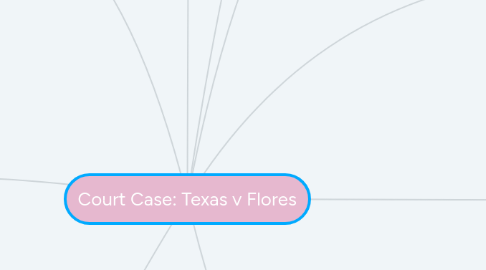
1. Standards
1.1. Civics/Government
1.1.1. analyzing court case
1.1.2. relating case to constitution and specific amendments
1.2. Social Studies
1.2.1. examining other cases in history that relate
1.2.2. using research skills
1.3. ELA
1.3.1. use research skills to create informed opinion
1.3.2. be able to write that opinion in complete sentences and include supporting details
2. Connections
2.1. Real Life connections
2.1.1. my rights as a student
2.1.2. my rights as a U.S. citizen
2.2. What else does the 14th amendment protect?
2.3. Connecting this case to Employment Division v. Smith
2.3.1. How did these cases relate to each other?
2.3.2. what are exercise free rights?
2.4. What is the RFRA?
2.4.1. is it constitutional?
3. Activities
3.1. Debating in group setting
3.2. reading and analyzing text in small-groups
3.3. Writing an opinion piece backed up by information from the assigned text
3.4. Using technology in class to complete a formative assessment in class
3.5. collaboration in small-groups/sharing ideas
3.6. Using cause and effect graphic organizer to organize thoughts while reading
3.7. using highlighting and annotation skills to organize thoughts while reading
4. Engage
4.1. Give brief lecture/PowerPoint on the necessary background information (Employment Division v. Smith)
4.2. Include images from the hearing
4.3. Misunderstandings will be address through questioning throughout lecture
4.4. Check for Understanding by having students give "thumbs up" after questions
4.5. Pose the question: "Do you believe the outcome of this case was fair? Why or why not?"
5. Explore
5.1. Students will get into small groups and communicate their thoughts of the case to eachother.
5.2. Students will use guiding questions to help with their discussion
5.3. Half of the students will be instructed to explore the Texas side or the case, the other half of the class will be assigned the Flores side
5.3.1. Reading
5.3.1.1. HI-4: Answering literal, inferential, prediction, evaluation, and/or personal response questions about a text
5.3.1.2. HI-14:Determining the cause and effect relationship of two related events in a literary selection
5.4. Students will discover "What are Texas's main arguments for this case?", "What are Flores's main arguments for this case?" "What would the benefits/drawbacks be if Texas won?" What would the benefits/drawbacks be if Flores won?"
6. Explain
6.1. One spokesperson speak for the group on their decision
6.1.1. Listening/Speaking
6.1.1.1. HI-7: report detailed information on a topic supported by concrete details, commentary, and examples in complete sentences
6.2. Students will answer the guiding questions
7. Elaborate
7.1. Students will be able to connect this case to their own live by examining free exercise rights the possess
7.2. Explain further "free exercise rights"
7.3. Explain rights that we all have as U.S. citizens
7.4. Ask students about the rights they believe they should have or already have
8. Evaluate
8.1. Students will answer essay questions: 1. Do you believe the outcome of this case was fair? Why or why not?
8.1.1. Writing
8.1.1.1. B2: Providing reasons (Primary supports) and examples (secondary supports) to support the main idea/topic sentence.
